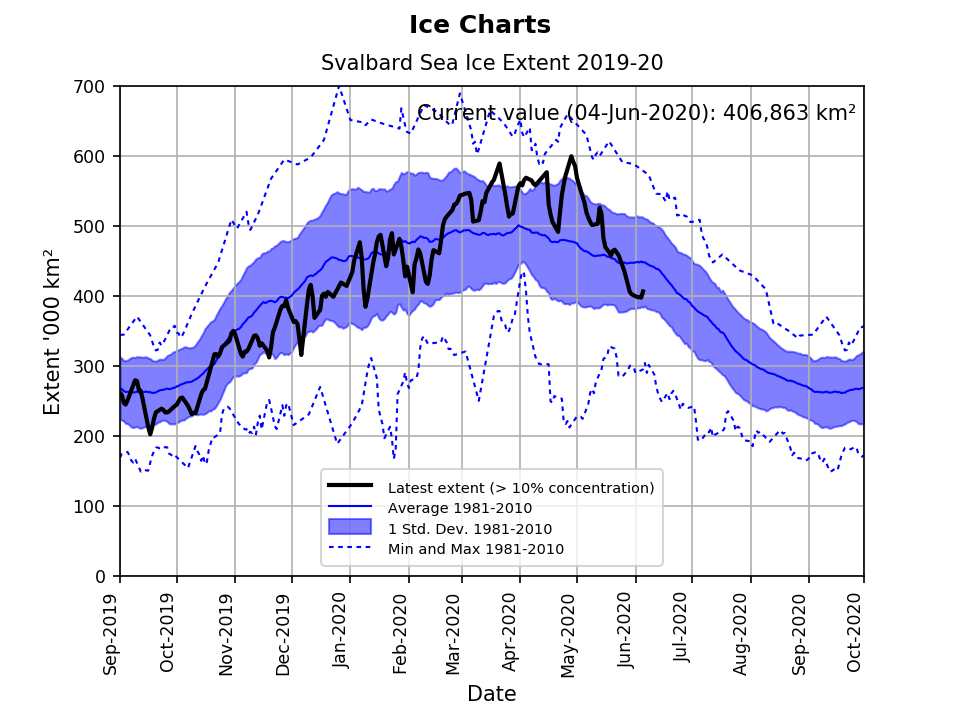Summer is approaching in the Arctic, and the Arctic sea-ice is melting. From a maximum sea-ice extent in March, which this year occurred on March 3rd, with the ice covering 15.2 million km2 (see previous post on cryo.met.no here), the ice-covered area will be more than halved by September.

The figure shows the daily Arctic sea-ice extent for this year (black and red curve) together with the years 2016-2019 (other colours) and a mean extent based on the period 1981-2000 (grey curve). A daily updated version of this figure is available here.

This figure shows the sea-ice extent in the Arctic ranked by month from 1979 until today. The colours and the numbers are ranking the years for each month in accordance with the sea-ice extent. The smallest numbers (red) represent years with little ice coverage and the highest numbers account for the years with maximum ice extent. April 2020 has rank “2”, meaning that this was the second-lowest monthly sea-ice extent for April since 1979. April 2019 holds the record. May 2020 is the fourth lowest for the record. The actual estimates for the sea-ice extent are found on this similar figure.
The areal coverage of sea-ice for the Svalbard region has during February - May this year generally been above normal, but is now closer to the average for the 30 year period (1981 - 2010) used as the climatological reference:

The presence - or absence - of sea ice has an important role for the Arctic climate. The sea ice-cover works as an insulator between the ocean and atmosphere above, and an ice-covered sea has a stabilizing effect on the water column. Contrarily, increasingly more ice-free ocean can cause even more difficult conditions for sea ice to form. Read more on this Instagram post produced by the Norwegian Polar Institute (in collaboration with MET Norway).

